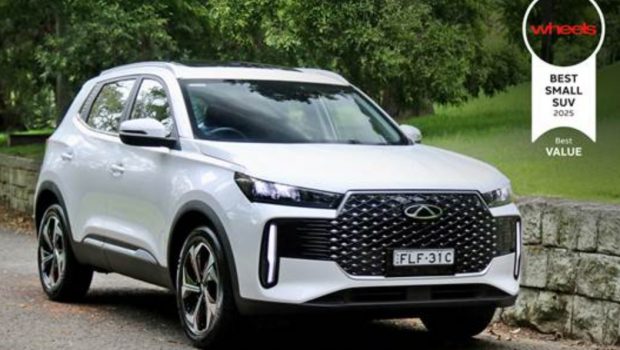Chery research reveals Australians want cleaner cars but remain confused by hybrid and EV terminology
Australians are ready to embrace the next generation of driving, but confusion about hybrid and electric technologies is holding many back. The Road Ahead With Chery: What Australians Know (And Don’t Know) About Hybrid & Electric Vehicles – based on a national survey of 2,010 prospective Aussie car buyers – found that while 3 in 4 Australians (74%) would consider a New Energy Vehicle (NEV), more than half (53%) say they are not confident in distinguishing between hybrid, plug-in hybrid and fully electric vehicles.
The report shows that nearly 1 in 4 Australians (23%) say their next car will be a hybrid, while a further 1 in 5 (21%) intend to buy another type of NEV, including plug-in hybrids (7%) or fully electric vehicles (7%). Interest in lower-emission vehicles continues to build as drivers look for smarter, more efficient options, though many still weigh this against cost and convenience.
Younger Australians are leading the interest in cleaner cars, even if affordability keeps many of them in petrol vehicles for now. Almost 9 in 10 Gen Z drivers (87%) would consider a NEV, yet 48% still expect their next car to be petrol-powered. This group also shows the highest confidence in driving longer distances in hybrid or electric cars. Among them, Gen Z drivers in Sydney stand out as the most engaged nationally, with 40% saying they are very likely to consider owning a NEV.
“Australians clearly want smarter, more efficient cars but many are still wading through jargon,” said Lucas Harris, Chief Operating Officer, Chery Australia. “Our job is to make hybrid technology simple and accessible so families can choose with confidence. Younger drivers are curious and environmentally aware; they just need clarity, not complexity.”
Knowledge gaps remain across the market
The research highlights a clear need for education to support the transition to new energy technology, with confidence levels differing greatly by gender. Nearly 2 in 3 women (64%) say they are not confident understanding hybrid and electric models, compared with 2 in 5 men (41%). Among those who lack confidence, the top reasons include limited experience with the vehicles (39%), confusing acronyms (31%) and feeling unfamiliar with the technology (33%).
When choosing their next vehicle, Australians focus on practical considerations. Cost and value rank highest (50%), followed by reliability (38%) and fuel efficiency (36%). Among those open to New Energy Vehicles, purchase cost (58%), battery charging time (38%) and driving range (34%) are the most important factors.
Confidence in hybrids continues to grow
Australians are more confident taking a plug-in hybrid or Super Hybrid on long road trips than fully electric vehicles, with 55% feeling confident compared with 46% for fully electric vehicles. Super Hybrid refers to Chery’s next-generation hybrid system, which combines the flexibility of petrol power with extended electric range for greater efficiency.
When asked what would help build their confidence, 63% said longer battery range, 60% called for more charging stations/better infrastructure and 38% said a better understanding of vehicle capabilities.
Australians associate NEVs most strongly with lower running and fuel costs (82%), reduced emissions (57%) and a quiet, smoother drive (52%). These perceptions point to an emerging awareness of the practical and environmental benefits of hybrids, even as range and affordability remain front of mind.
“This research reinforces that Australians want affordable innovation. With hybrids leading on long-trip confidence and cost firmly top of mind, we see a real opportunity for education and accessibility to go hand in hand,” said Harris. “Australians are ready to make the switch, but they need clear information and real-world reassurance. That’s where Chery can play a vital role, simplifying new energy technology and showing how smarter, more efficient vehicles can fit seamlessly into everyday life.”
Chery’s Quick Guide to New Energy Vehicles
Full Battery Electric Vehicle (BEV)
Runs entirely on electricity with no petrol engine at all. It’s powered by rechargeable batteries that must be plugged in to charge. BEVs have lower range but are well suited for urban commutes.
Hybrid Electric Vehicle (HEV)
Combines a petrol engine with an electric motor to improve fuel efficiency. There is nothing to plug in as the battery charges automatically while driving. HEV’s focus on fuel efficiency, lower emissions, and smoother performance, not on long electric-only driving. Ideal for drivers who drive moderate distances and don’t have easy access to charging points.
Super Hybrid / Plug-in Hybrid) PHEV
Works like a hybrid but has a larger battery that can be recharged by plugging in to an external power source as well as during driving. This allows longer trips powered purely by electricity before the petrol engine is needed, the ideal choice for longer trips – with ranges of 1200km+ on a single tank and one charge.
Chery’s growing range of NEVs in Australia reflects the brand’s commitment to making advanced technology accessible to all drivers. The line-up includes:
Chery’s Plug-in Hybrid / Super Hybrid (PHEV) range:
- Tiggo 7 Super Hybrid (PHEV) – Mid-size five-seater plug-in super hybrid SUV, delivering up to ~90 km EV range and ~1,200 km combined range | From $39,990 drive-away
- Tiggo 8 Super Hybrid (PHEV) – Seven-seat plug-in super hybrid SUV, offering up to ~90 km EV mode and ~1,200 km combined range | From $45,990 drive-away
- Tiggo 9 Super Hybrid (PHEV) – All Wheel Drive seven-seat flagship plug-in hybrid SUV with up to 170 km EV mode and ~1,250 km total range | From $59,990 drive-away
Chery’s Hybrid Electric Vehicle (HEV):
- Tiggo 4 Hybrid (HEV) – Compact five-seat hybrid SUV offering smart tech and efficiency and an estimated ~1,000 km total range | From $29,990 drive-away







